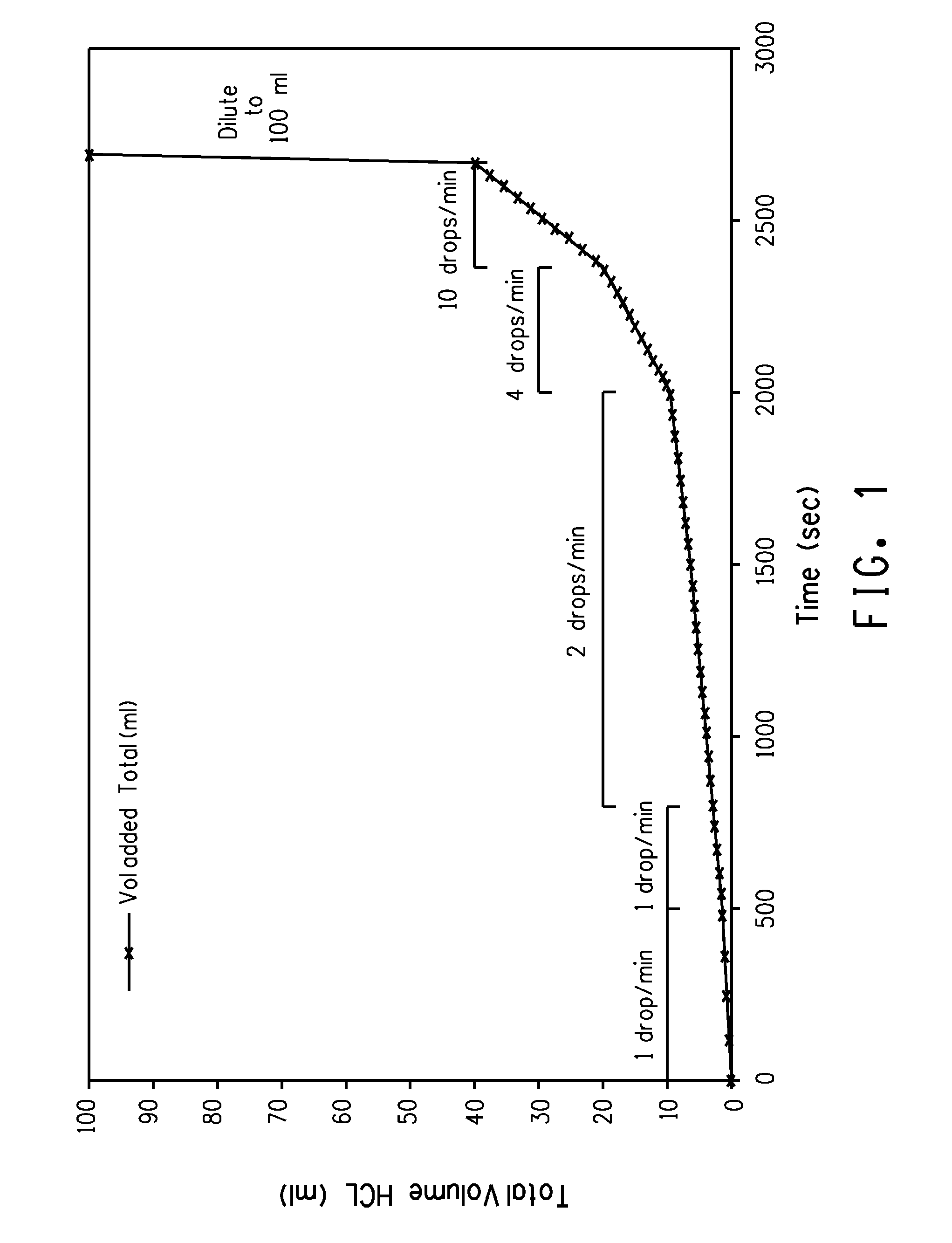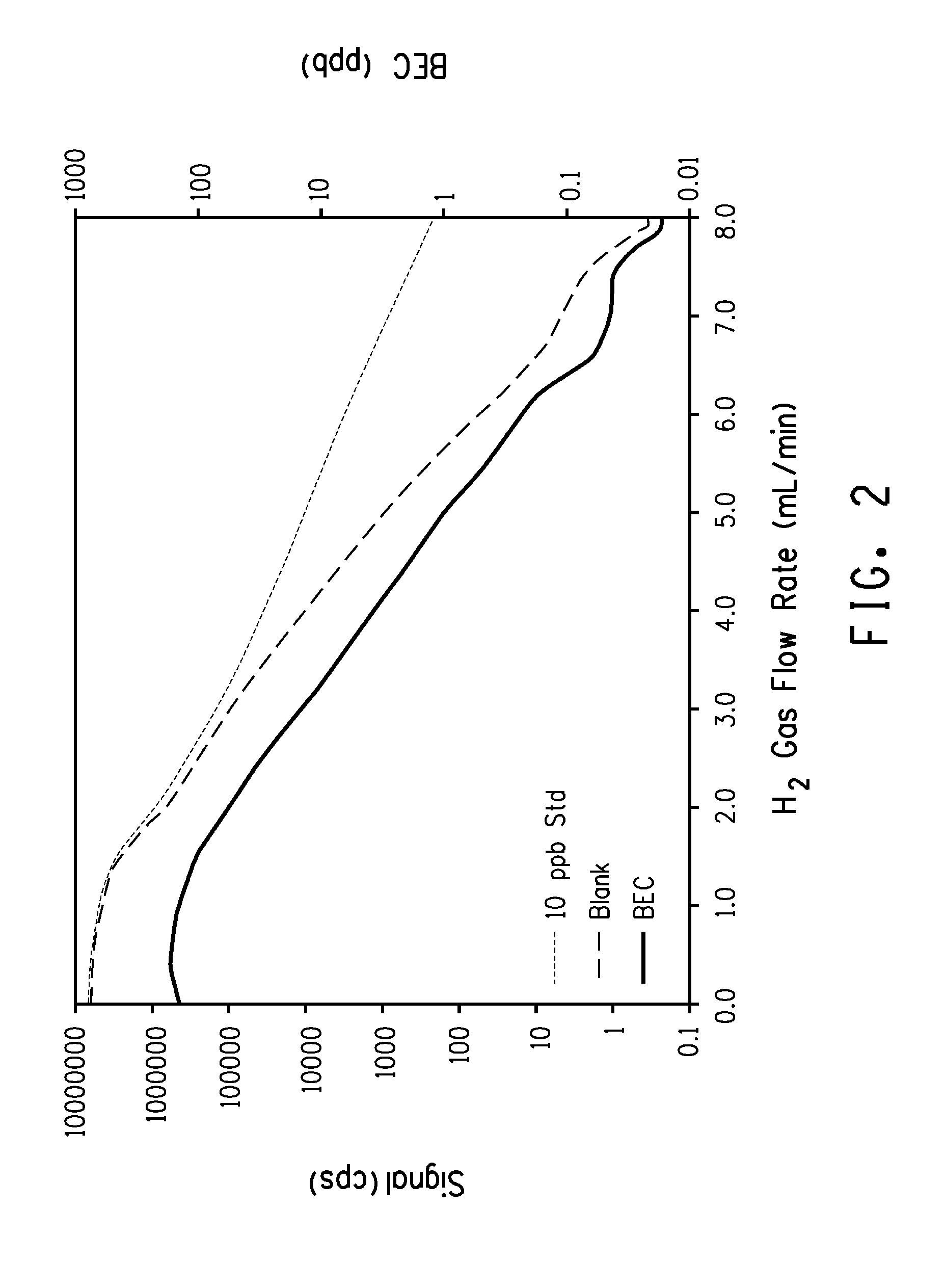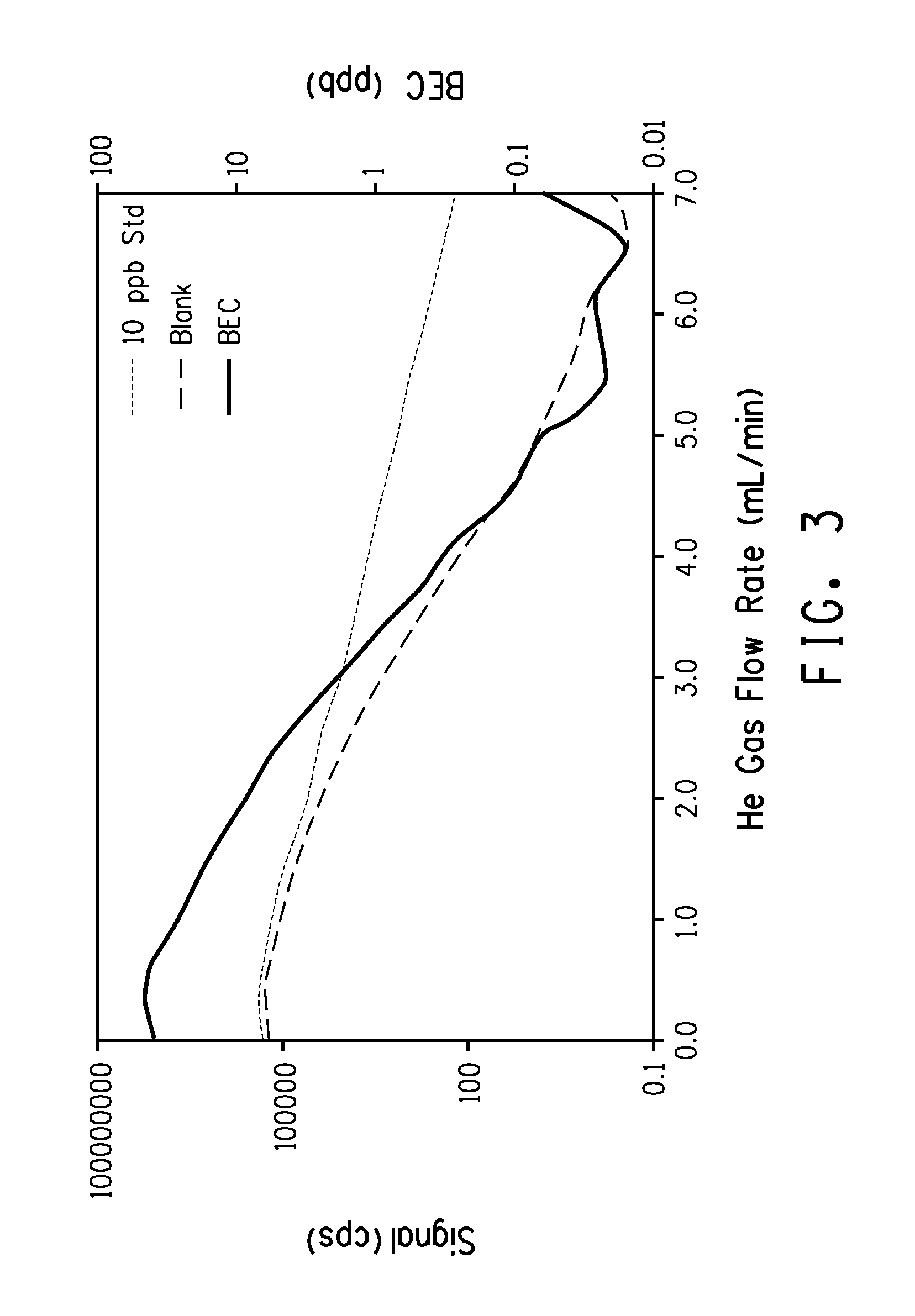Method for quantification of analytes in a titanium, tin or silicon tetrachloride sample
a technology of titanium tetrachloride and analytes, which is applied in the field of method for quantification of analytes in titanium, tin or silicon tetrachloride samples, can solve the problems of difficult analysis using, corrosion and water-sensitive nature of certain compositions such as titanium, tin and silicon tetrachloride pose challenges in icp-ms analysis,
- Summary
- Abstract
- Description
- Claims
- Application Information
AI Technical Summary
Benefits of technology
Problems solved by technology
Method used
Image
Examples
example 1
Detection and Measurement of Inorganic Impurities in TiCl4
[0085]A 10 mL (17.28 g) aliquot of a TiCl4 sample was transferred into a 100 mL volumetric flask. The flask was placed into a tray filled with ice water. The tray was fitted with a lid that allows the top portion of the volumetric flask to be accessed while still holding the flask in place. The tray was placed on top of a shaker plate. In a separate ice bath, a 20% HCl solution was chilled to less than 10° C. After the TiCl4 aliquot was chilled to below 10° C., one drop of 20% HCl was added to the volumetric flask. The resulting reaction is exothermic. The shaker plate was turned on low and allowed to swirl the solution until it was recooled to less than 10° C. Additions of the 20% HCl were continued in this fashion until a mixture of thick yellow liquid and porous yellow solids were obtained. At this point, the rate of addition of HCl solution was increased with continued mixing of the solution. After the volumetric flask w...
PUM
| Property | Measurement | Unit |
|---|---|---|
| temperature | aaaaa | aaaaa |
| freezing point | aaaaa | aaaaa |
| temperature | aaaaa | aaaaa |
Abstract
Description
Claims
Application Information
 Login to View More
Login to View More - R&D
- Intellectual Property
- Life Sciences
- Materials
- Tech Scout
- Unparalleled Data Quality
- Higher Quality Content
- 60% Fewer Hallucinations
Browse by: Latest US Patents, China's latest patents, Technical Efficacy Thesaurus, Application Domain, Technology Topic, Popular Technical Reports.
© 2025 PatSnap. All rights reserved.Legal|Privacy policy|Modern Slavery Act Transparency Statement|Sitemap|About US| Contact US: help@patsnap.com



